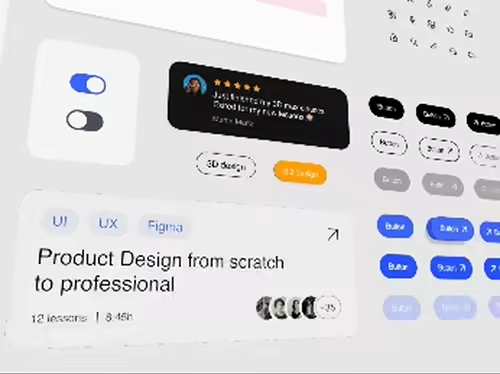
Design System Development: Crafting Consistency and Efficiency
Starting at
$
25
/hrAbout this service
Summary
What's included
Design System Guidelines:
A comprehensive document that outlines the principles, rules, and best practices for using the design system. It covers aspects such as typography, color usage, iconography, spacing, and more.
Component Library:
A repository of reusable UI components, including buttons, forms, navigation elements, cards, and other interface elements. Each component should come with design specifications and code implementation examples.
Style Guide:
A visual guide that showcases the approved color palettes, typography choices, icon sets, and spacing rules. It provides a clear reference for maintaining design consistency.
Design Tokens:
A structured system for defining and managing design properties like colors, typography, and spacing in a consistent manner. Design tokens enable easy collaboration between designers and developers.
Documentation:
Detailed documentation that explains how to use the design system effectively. It should include instructions for integrating components, applying styles, and adhering to design principles.
UI Kit:
A digital kit that contains design files (e.g., Sketch, Figma, Adobe XD) with all the components and styles used in the design system. This aids designers in creating consistent mockups and prototypes.
Design Assets:
Providing design assets in various formats, such as SVG icons, image assets, and other graphical elements used in the design system.
Training Materials
If necessary, training materials or sessions for design and development teams to ensure they understand and can effectively use the design system.
Support and Maintenance Guidelines:
Recommendations on how to keep the design system up-to-date and evolve it as the product and brand requirements change.
Feedback Mechanism:
Establishing a process for users, designers, and developers to provide feedback and suggestions for improving the design system over time.
Skills and tools
Industries

